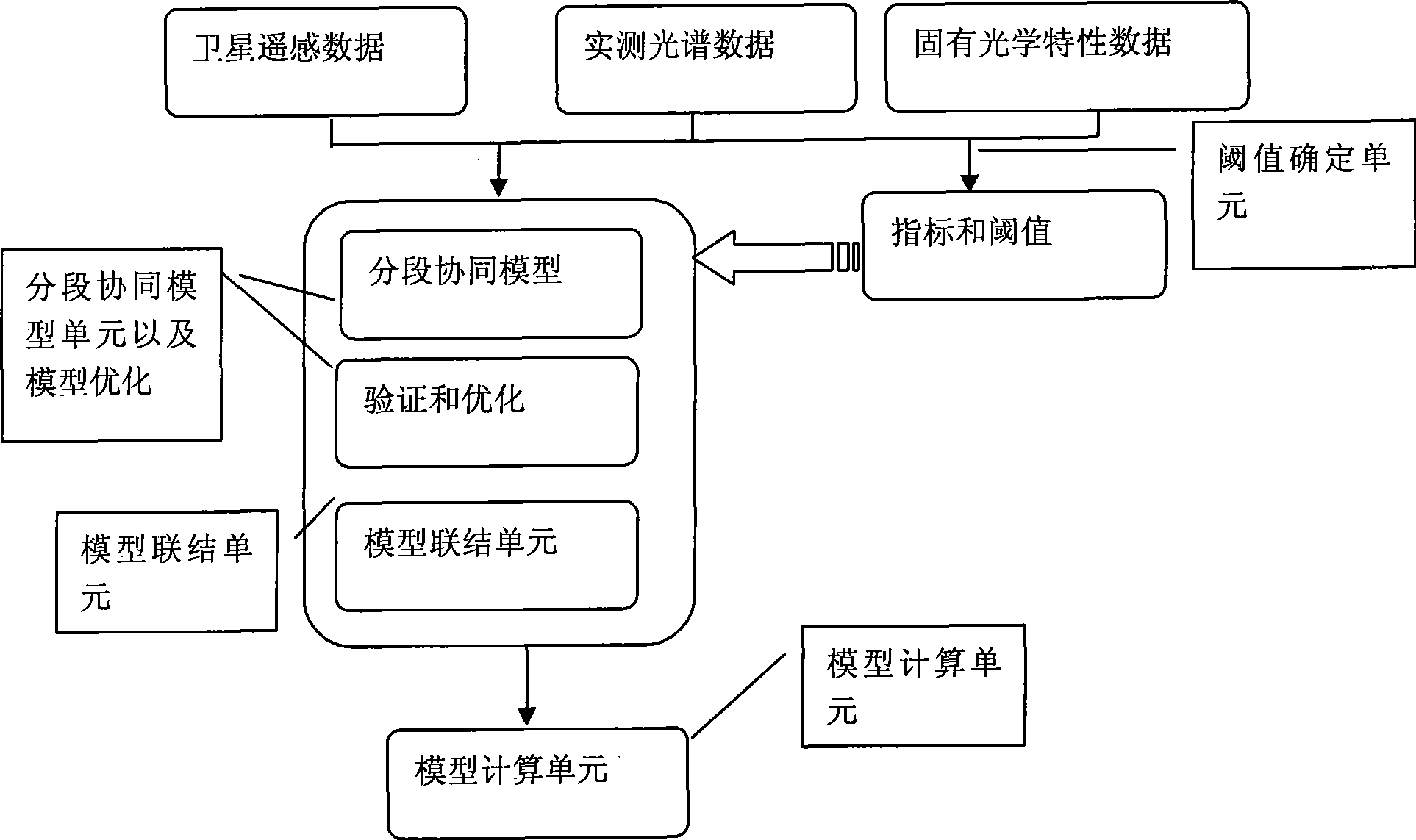Inland water chlorophyll a concentration remote-sensing monitoring method based on segmenting cooperation model
A chlorophyll and model technology, which is applied in the measurement of color/spectral characteristics, etc., can solve the problems of large errors and affect the inversion accuracy of the chlorophyll a model, and achieve the effect of improving the monitoring accuracy, solving the phenomenon of concentration difference and spatial dislocation, and the method is simple.
- Summary
- Abstract
- Description
- Claims
- Application Information
AI Technical Summary
Problems solved by technology
Method used
Image
Examples
Embodiment Construction
[0018] The present invention utilizes satellite remote sensing data to monitor the technical flow chart of inland water body chlorophyll a concentration as follows figure 1 shown. Using this method, the technical process for monitoring the concentration of chlorophyll-a in inland water based on satellite remote sensing data is as follows:
[0019] ① Determine the threshold
[0020] Utilize the optical physics mechanism of chlorophyll a in water body, deeply analyze and determine the quantitative characteristics of the optical absorption characteristics of chlorophyll a with the variation of concentration, determine the segmental reference index and index threshold of remote sensing spectrum, establish the discrimination criterion, and determine the segmental model threshold of spectral reflectance .
[0021] ②Build a segmented model
[0022] Using the method of statistical theory and under the guiding principle of concentration gradient, the inversion model and algorithm of...
PUM
 Login to View More
Login to View More Abstract
Description
Claims
Application Information
 Login to View More
Login to View More - R&D
- Intellectual Property
- Life Sciences
- Materials
- Tech Scout
- Unparalleled Data Quality
- Higher Quality Content
- 60% Fewer Hallucinations
Browse by: Latest US Patents, China's latest patents, Technical Efficacy Thesaurus, Application Domain, Technology Topic, Popular Technical Reports.
© 2025 PatSnap. All rights reserved.Legal|Privacy policy|Modern Slavery Act Transparency Statement|Sitemap|About US| Contact US: help@patsnap.com

